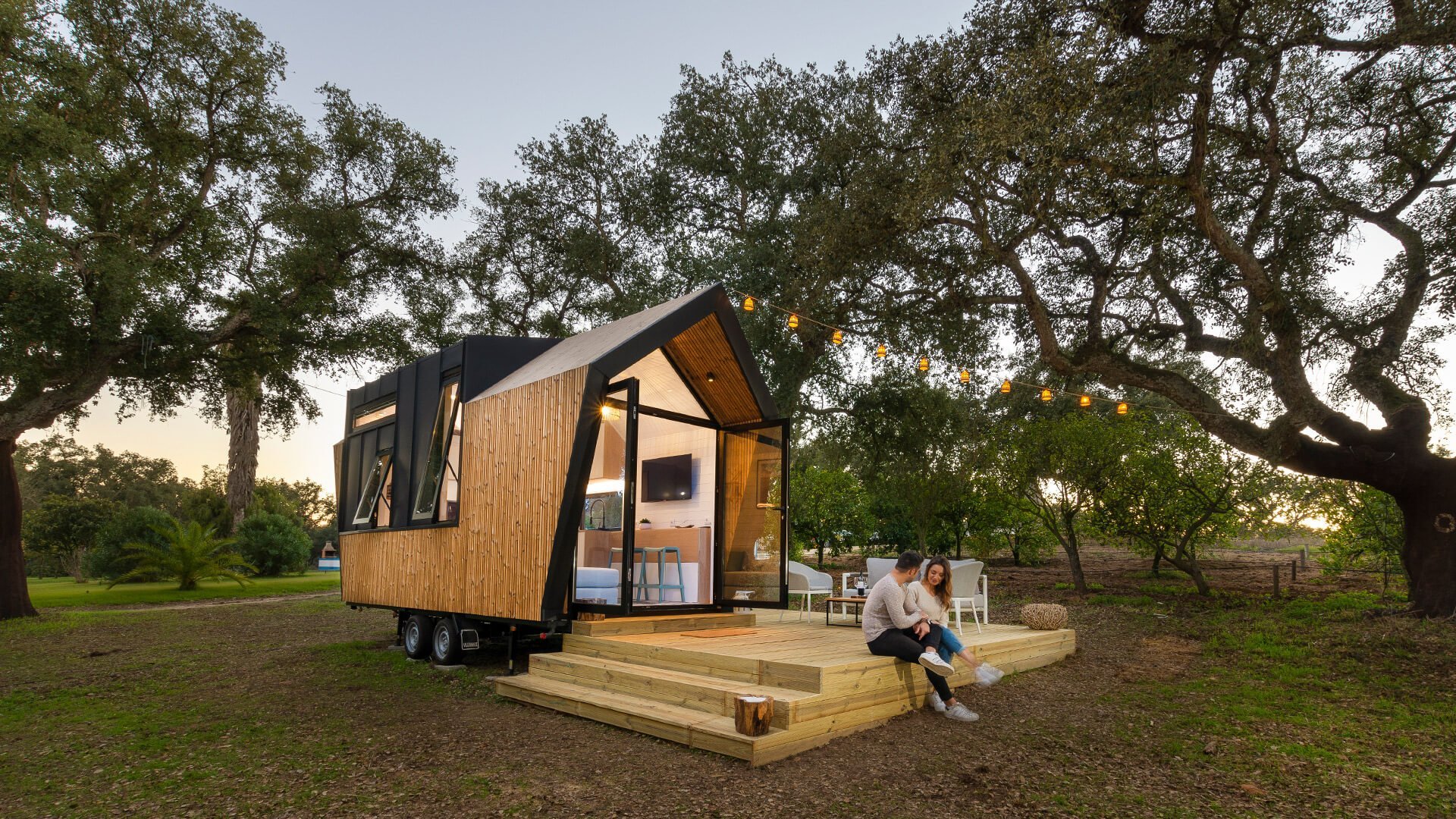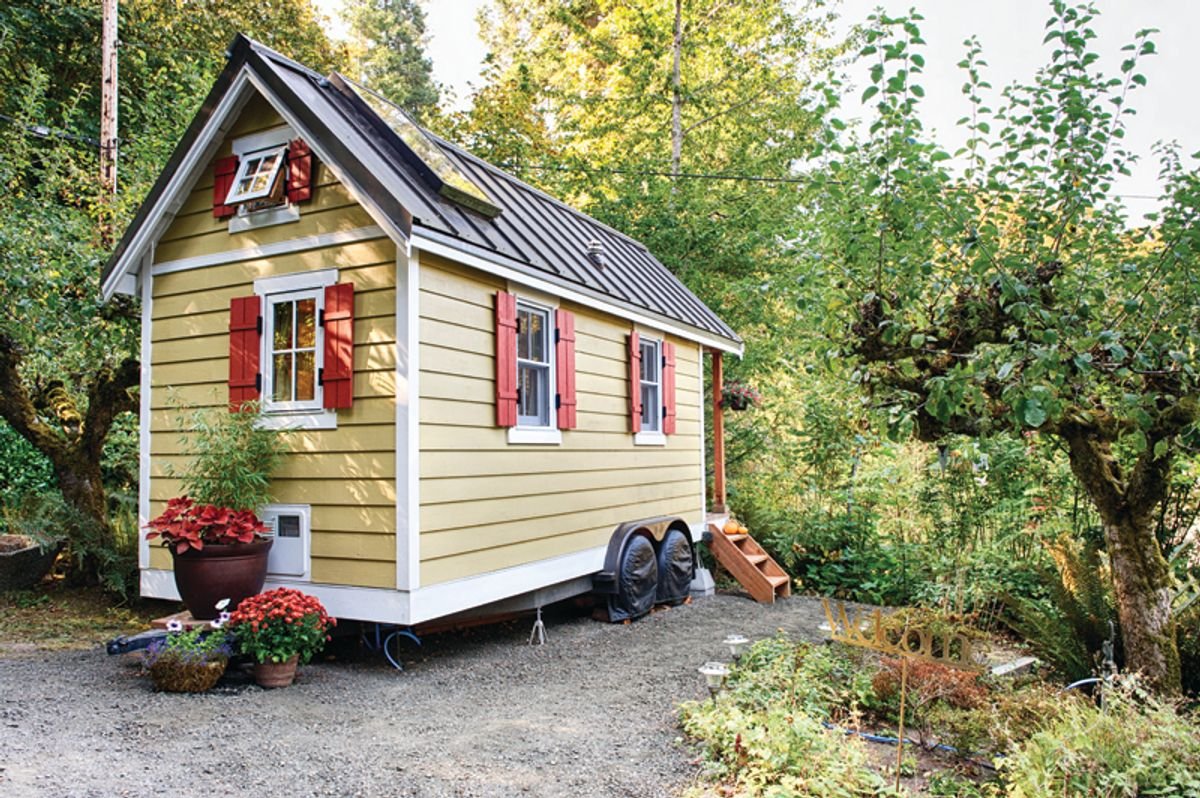Understanding Tiny House Definition and Design
Discover > Homesteading > Understanding Tiny House Definition and Design
Tiny houses are taking the world by storm. These small and portable homes offer a cost-effective and sustainable living solution, helping people save money and live a simpler, more eco-friendly life. But what exactly constitutes a tiny house? In this blog post, we'll explore the definition of tiny houses and how they differ from traditional homes.
First and foremost, a tiny house is defined by its size. A tiny house typically measures between 100 and 400 square feet, and its design is optimized for functionality and minimalist living. A tiny house is designed to provide essential amenities like kitchen, bathroom, bedroom, and living space, all while taking up the smallest possible footprint. Many homeowners even opt for multi-functional furniture to further optimize their living space.
Another key characteristic of a tiny house is its mobility and portability. Most tiny houses are built on wheels and can be moved from one location to another, allowing homeowners to travel and explore new places while still having the comfort of their home. Many states in the US have specific regulations for building and living in tiny houses, which allow homeowners to park their tiny home on private property or RV parks.
Tiny houses are a growing trend among environmental and sustainability enthusiasts because of their reduced carbon footprint. Designed for simple living and minimalistic decor, these houses reduce the consumption of electricity, water, and other resources greatly. In addition to their energy efficiency, many tiny houses are also built with environmentally friendly materials like reclaimed wood and recycled materials while they may feature eco-friendly technologies like solar panels to generate power.
Finally, tiny houses are also afforded benefits that aren't possible with larger homes. Fewer square feet means less cleaning, less time spent on maintenance, and more time enjoying life. Tiny houses also place less of a strain on resources, making them a perfect choice for those who want to live a more cost-effective and sustainable life. They're perfect for singles, couples, and people who don't require large living spaces.
The Tiny House Movement
Have you ever heard of the tiny house movement? It is an architectural and social movement that advocates for downsizing homes to simplify life and reduce waste. More and more people are joining this movement, as they see the benefits of owning a tiny house.
The tiny house movement started in the late 1990s and has been gaining traction ever since. It is a simple way of life that allows you to focus on what is essential while eliminating the non-essentials. One advantage of owning a tiny house is that it is affordable and can save you money in the long run. It is also environmentally friendly as it requires less energy to heat or cool the space.
Owning a Tiny House
If you are interested in owning a tiny house, there are several ways to go about it. You can buy a pre-made tiny house, build one yourself, or hire a builder to construct one for you. When it comes to building, you have the option to customize the design and layout to fit your specific needs and preferences.
Another great advantage of owning a tiny house is the freedom it provides. You can move your tiny house anywhere you want, as long as you have the necessary permits and zoning approval. This option gives you the opportunity to explore new places and travel with your home.
A Minimalist Lifestyle
Living in a tiny house also encourages a minimalist lifestyle. You have to downsize your belongings to fit into the limited space, which helps declutter your life. This lifestyle shift also encourages consumers to buy less and find joy in experiences over material possessions.
Finally, the tiny house movement has a great community. Many tiny house enthusiasts gather online or in person to share tips, ideas, and experiences. This community of like-minded individuals is supportive and encourages one another to live a simple and sustainable life.
The Art of Designing a Tiny House
The idea of living in a tiny house has become increasingly popular in recent years. With the rise of minimalism and a desire to live a simpler, more sustainable lifestyle, many people are looking to downsize and live in smaller, more manageable spaces. However, designing a tiny house is not as simple as just making it smaller - there are many considerations to take into account to create a functional and comfortable living space.
Practical Considerations
When it comes to designing a tiny house, practicality should always come first. This means making the most out of every inch of space. Floor plans should be meticulously planned to ensure that there is enough room for all the necessary amenities, such as a bathroom, kitchen, living space, and bedroom. Designers should also consider how to make use of vertical space, such as with lofted beds or storage solutions. Another important factor is ensuring that the house meets local building codes and regulations.
Style and Aesthetics
Despite the practical considerations, a tiny house does not have to be boring or utilitarian. In fact, many tiny house owners place a high value on design and aesthetics. With a smaller space, it's important to choose every element carefully - from the type of flooring to the color of the walls. Many tiny houses have a unique, customized look, with features like reclaimed wood, handmade furniture, and creative storage solutions. Designers should prioritize creating a cohesive and stylish aesthetic that reflects the owner's personality and lifestyle.
Sustainability
Living in a tiny house is often part of a larger commitment to sustainability. This means that designers must take into account how to maximize energy efficiency, reduce waste, and use eco-friendly materials. Features like solar panels, composting toilets, and rainwater collection systems can all help reduce the home's environmental impact. Additionally, using sustainable materials like reclaimed wood, bamboo, or recycled insulation can help create a truly earth-friendly home.
Comfort and Livability
Finally, the most important consideration when designing a tiny house is ensuring that it is comfortable, livable, and functional. This means taking into account the owner's individual needs, preferences, and lifestyle. For example, if the owner has a pet, there should be space for a bed or crate. If the owner loves to cook, the kitchen should be designed with that in mind. Additionally, designers should prioritize creating a space that is both relaxing and stimulating, with features like natural light, comfortable seating, and space for hobbies and interests.
The Emotional Benefits of Tiny House Living
While it may seem daunting to downsize into a tiny house, there are many emotional benefits to this lifestyle. Living with less can help reduce anxiety and stress, by simplifying our lives and reducing the distractions and clutter that often come with a larger home. Additionally, tiny house living fosters a sense of community and connection, as owners often choose to live in tiny home communities or travel with their homes to different locations. Finally, tiny house living offers the freedom and flexibility to pursue passions and experiences that might not be possible with a larger home, such as living off the grid or traveling the country.
Designing a tiny house is both a challenge and an opportunity. By prioritizing practicality, style, sustainability, and livability, designers can create a truly unique and beautiful home that reflects the owner's personality and values. Living in a tiny house offers many emotional benefits, from reducing stress to fostering community-building, and it is a lifestyle that is gaining popularity for good reason. With careful planning and consideration, a tiny house can be an incredibly enriching and fulfilling way to live.
The Benefits of a Tiny House
Lower Costs
One of the most obvious benefits of living in a tiny house is the lower cost of living. With smaller square footage, you will spend less on utilities and other expenses like property taxes. Tiny houses can also be built at a lower cost than traditional homes, making them a more affordable housing option. With less money being spent on housing, you will have more financial freedom to save or invest in other areas of your life.
Environmental Benefits
Living in a tiny house also offers environmental benefits. With a smaller footprint, tiny houses require fewer resources to build and less energy to heat and cool. Many tiny home builders are using sustainable materials and methods, making them a more eco-friendly housing choice. Additionally, downsizing your belongings and living a minimalist lifestyle can reduce your overall environmental impact.
Increased Mobility
Tiny houses on wheels offer a unique advantage that traditional homes can not match. Since these homes are portable, you can easily move your home wherever you want, without the hassle of selling or buying a new property. This mobility can allow you to explore new locations, travel frequently, or live closer to loved ones.
Customization and Creativity
Finally, living in a tiny house allows for a level of customization and creativity that traditional homes may not. With less space to work with, you can get creative with storage and design, resulting in a truly unique and personal living space. Building or designing a tiny house offers an opportunity to express your creativity and personality, making it a more fulfilling and rewarding experience.
Conclusion
In conclusion, a tiny house isn't just a small house - it's a design philosophy that optimizes living space and lifestyles. With their compact size, mobility, sustainability, and simplicity, tiny houses offer an ideal living solution for those who want to lead an environmentally friendly and cost-effective life. As the concept of living small catches on across the world, it's likely we'll see more and more people opting for tiny homes as their primary residence.
#tiny houses #tiny house community #typical tiny house #tiny life #tiny house nation #small house movement #tiny house communities #tiny house trend #square footage #tiny home living #tiny living





